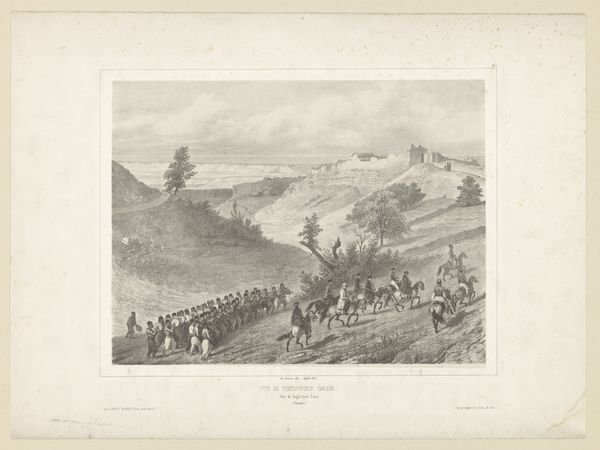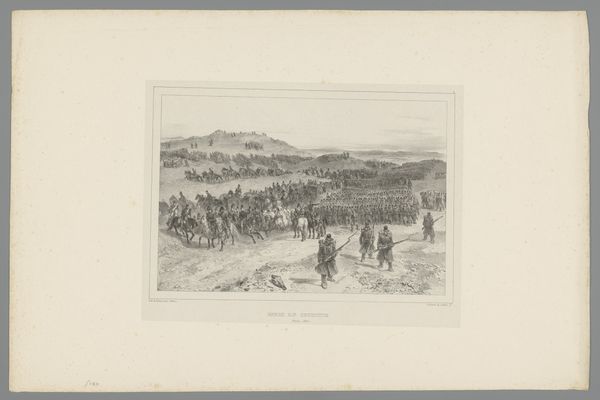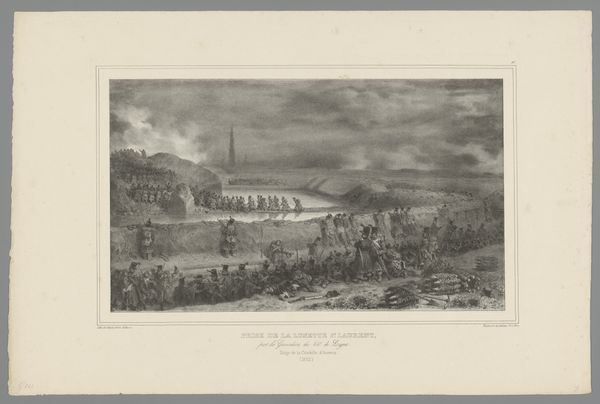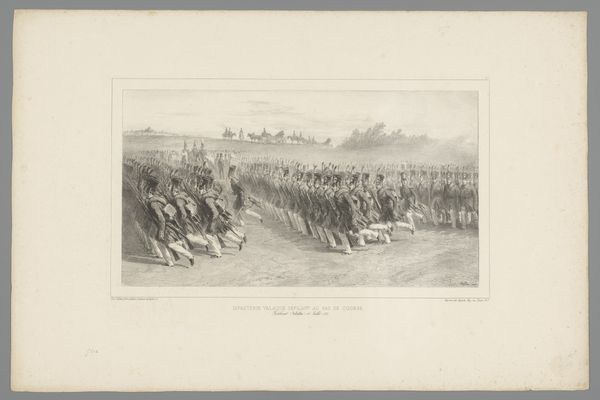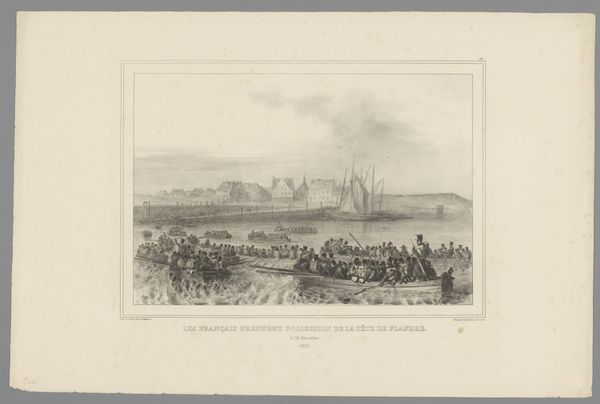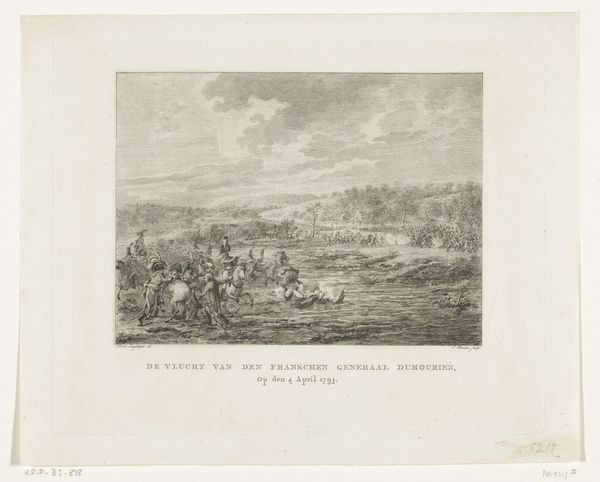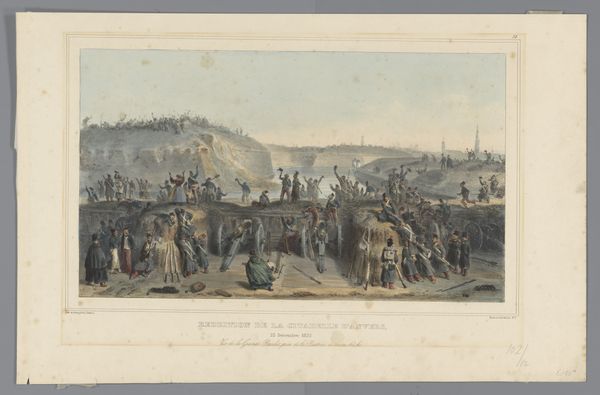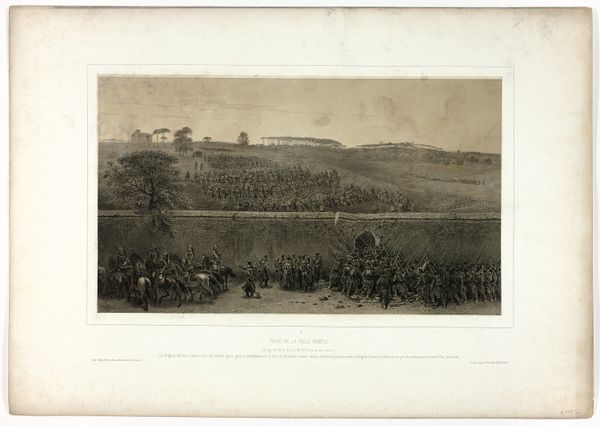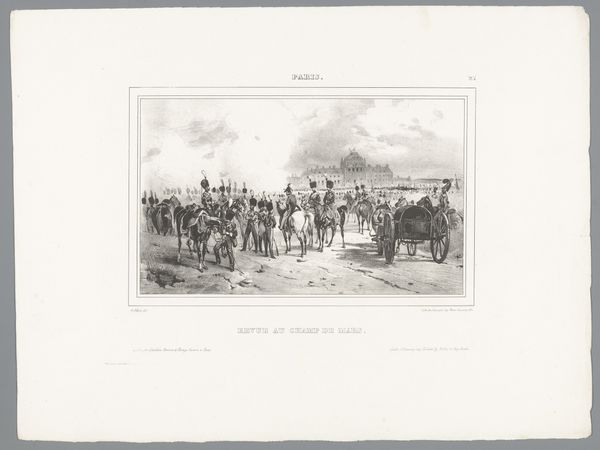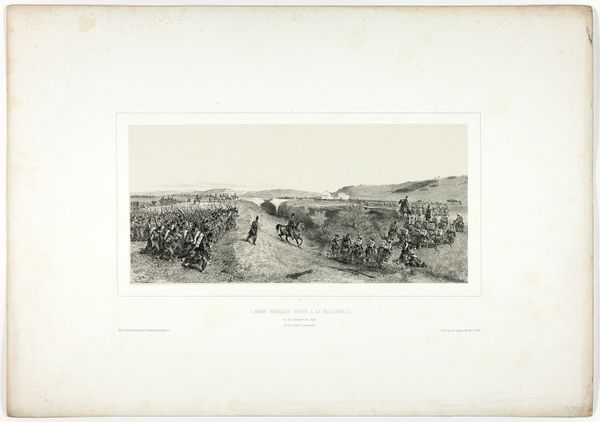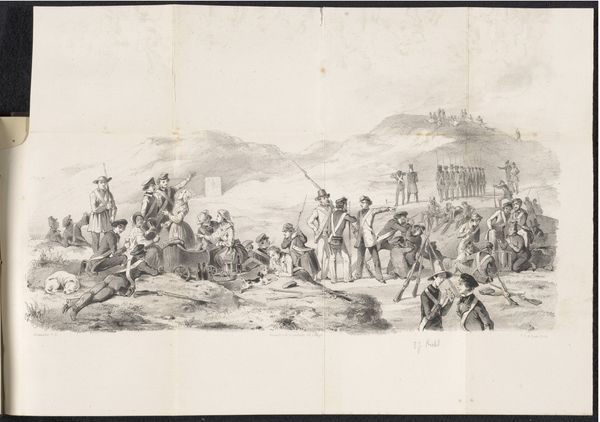
lithograph, print
#
narrative-art
#
lithograph
# print
#
romanticism
#
history-painting
Dimensions: height 365 mm, width 552 mm
Copyright: Rijks Museum: Open Domain
Auguste Raffet made this print, "Overgave van de Citadel van Antwerpen, 1832," using lithography. It depicts the surrender of the Citadel of Antwerp in Belgium. The Dutch held the citadel against French and Belgian forces for several weeks before surrendering in December 1832. Looking closely, we can see that Raffet uses visual codes of celebration. He references the historical associations of military defeat and victory in the landscape, with the defeated Dutch forces on one side and the jubilant French and Belgian forces on the other. The image tells us about the power of nationalism in the 19th century, as Belgium sought independence from the Netherlands. It also speaks to the ways in which war and military events shaped national identity. Historical resources, such as military records, personal letters, and newspaper accounts, help us understand the events surrounding the siege and the perspectives of those involved. By studying the social conditions and institutional contexts of art, we can better understand its meanings and significance.
Comments
No comments
Be the first to comment and join the conversation on the ultimate creative platform.
